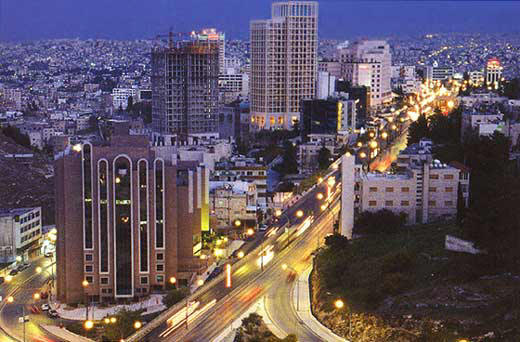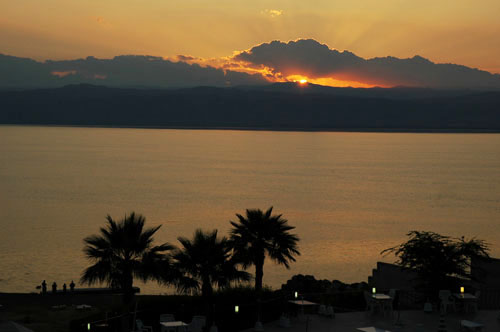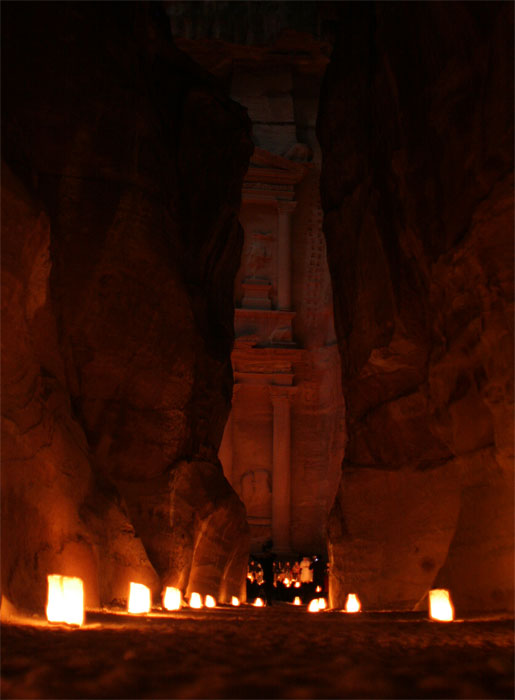Tour of Jordan
Itinerary :
Day 1 of Jordan Tour
Arrive in Amman
Amman, the modern and ancient capital of Jordan, is one of the oldest continuously inhabited cities in the World. The city's modern buildings blend with the remnants of ancient civilizations.
Overnight in Amman. Dinner if required.
Day 2 of Jordan Tour
Amman - Jerash - Desert Castles - Amman
This morning we leave Amman by bus for a tour of the extensive Roman site of Jerash. In the 1st and 2nd centuries AD, Jerash was a wealthy city and is today considered one of the most important and best preserved of all Roman sites. We visit the famous elliptical Forum, the beautiful amphitheatre with its superb natural acoustics, and the site of the huge Temple of Artemis.
This afternoon we travel east from Amman into the Jordanian Desert. Here we see some of the Desert Palaces built by the Omayyed Caliphs in the 8th century AD. Of particular interest are Qasar Amra with its unique frescoes of hunting scenes and dancing girls. Qasar Azraq, built entirely of black basalt, was used as a base by Lawrence of Arabia in his later campaigns against the Turks.
We return to Amman via a road that is one of the main trade route between Jordan and nearby Iraq.

Overnight in Amman. Breakfast and dinner.
Day 3 of Jordan Tour
Amman: City Tour - Dead Sea - Petra
This morning we tour Amman, visiting the Roman amphitheatre, Folklore Museum, Museum of Popular Traditions, Archaeological Museum, and the ruins of the Temple of Hercules.
From Amman we travel to Madaba, a small town famous for its magnificent mosaic floors. A unique mosaic covers the floor of St. George's church and consists of a huge map of the Holy Land as it appeared in the 6th century AD.
Driving to the edge of the Jordan Valley we reach Mount Nebo from where Moses and the Children of Israel first saw the Promised Land. On a clear day you can look down to see the Dead Sea and the River Jordan. On the other side of the valley is the city of Jerusalem. Here we see a huge mosaic of hunting scenes covers the floor of a ruined Byzantine church.
We leave Mt Nebo and travel south via the Dead Sea Highway, making a stop at the Dead Sea en route. King David, King Herod, Jesus, and John the Baptist were closely linked with the Dead Sea and its surroundings. During the Egyptian conquest it is said that Queen Cleopatra obtained exclusive rights to build cosmetic and pharmaceutical factories in the area. Later on, the wily Nabateans discovered the value of bitumen extracted from the Dead Sea used by the Egyptians for embalming their dead. The Dead Sea contains 10 times more salts and minerals than the Mediterranean Sea. The high salt and mineral concentration enables everyone to float in its waters but doesn't allow the proliferation of fish and other marine life.

We continue to Petra, arriving in the late afternoon.
Overnight in Petra. Breakfast and dinner.
Day 4 of Jordan Tour
Petra: Site Tour
Petra was the capital of the Nabatean Kingdom from the fourth century BC to the 2nd century AD. From the 12th century until its rediscovery in 1812, Petra was lost to the world--a closely guarded secret of the local tribes. Today the 'rose red city half as old as time' is probably the most impressive archeological site in the Middle East, rivaling the temples and Pyramids of Egypt in grandeur.
This morning, on our way into the hidden valley of Petra, we will see the Obelisk Tomb and the irrigation system which carried water from a dam throughout the desert city. Access to the monuments of Petra is through a narrow gorge in the towering rocks called the 'Siq'. As we emerge from the 'Siq' you stand in awe in front of the 'Treasury' (El Kazneh), a graceful structure carved from the living rock. After pausing to admire the elegant columns and carvings we carry on into the valley where elaborate tombs are carved into the multi-colored walls. Everywhere the sandstone swirls and twists in shades of red, orange, yellow, pink and white. Next we will see the Roman amphitheatre, carved directly out of the mountain, with space for over 3,000 spectators.
Further on in the main valley of Petra, are the Royal Tombs including the Palace Tomb and the Silk Tomb. We visit the temple of the Nabateans' main god, Dushara, and we also see the 'Temple of the Winged Lion'. Our formal guided tour of the site terminates with a visit to the Petra Nabatean Museum.
At this point, you may explore further on your own, or return to our hotel to relax and / or shop. You may also take a strenuous walk up a narrow pass to see the magnificent 'Monastery' building, El Deir. The views of Petra and the surrounding area are expansive. The walk is steep, mostly on steps carved into the rock, and will take APPROXIMATELY one hour up (30 minutes down).
This evening after dinner you may like to go for a drink in a bar partly built into a 2,000 year-old Nabatean tomb!
NOTE: Access to Petra is by means of footpath only. The main sites occur near ground that is level and well-worn, though the overall site is huge. Our pace is leisurely with frequent breaks; however, to fully experience Petra you must be prepared for a considerable amout of walking and little shade.
Overnight at Petra. Breakfast and dinner.
Day 5 of Jordan Tour
Petra: El Beida
This morning we take a tour by bus to the nearby site of 'el Beidha' (known as 'Little Petra'). We will also see a settlement dating from the Neolithic period, some 8,500 years ago. This is one of the oldest sights in the Middle East; it shows evidence of habitation by a Pre-Pottery population who were herders experimenting with agriculture. We return to our hotel by bus.
This afternoon you can either relax or re-enter the breathtaking main site of Petra (the entrance fee today is at your own expense).
You may wish to explore on your own, or join your Tour Leader on a steep walk to the 'High Place', which (some believe) was the site of human sacrifice to the Nabatean gods. From here it is possible to see the tomb of the Jewish prophet, Aaron. This site offers the best views of the entire site of Petra, but should be attempted only by the fit!
Overnight at Petra. Breakfast and dinner.
Day 6 of Jordan Tour
Petra - Aqaba - Wadi Rum - Aqaba

Leaving Petra we stop briefly at 'the Spring of Moses', supposed to have magical properties.
We continue down the Desert Highway to Jordan's only port, Aqaba, on the Red Sea. We will have time this afternoon to relax or visit the Red Sea beaches.
Later this afternoon we make an excursion to Wadi Rum where Lawrence of Arabia conducted many of his campaigns during the First World War. While at Wadi Rum we take four wheel drive vehicles out into the desert where the sand is red and the rocks look like gigantic multi-layered chocolate cakes melting in the setting sun. We may be invited into a goat-hair tent to share a glass of tea with some Bedouin tribesmen--the nomadic herdsmen of the desert who made up Lawrence's army. Running along the floor of the valley is the Hejaz Railway that Lawrence blew up repeatedly. After sunset we return to Aqaba.
Overnight in Aqaba. Breakfast and dinner.
Day 7 of Jordan Tour
Aqaba - Shobak - Kerak - Amman
Today we travel along the historic King's Highway from Aqaba to Amman. Along this route castles and towns were positioned a one day's travel distance apart. The first castle we come to is Shobak Castle, built by the Crusaders in 1115 and sacked by Moslem forces under Saladin in 1189. Farther north we explore Kerak Castle, also a 12th century Crusaders fortress. The castle's huge water cisterns and commanding position on a hill top allowed it to hold out against many sieges.
We continue to Amman, arriving in the late afternoon.
Overnight in Amman. Breakfast and dinner.
Day 8 of Jordan Tour
Departure
Departure from Amman.
Breakfast.
Tour recommended:
All year round
All tours are private
Minimum Pax: 02
Maximum Pax: 14
Airlines tickets and travel insurance ar not included
|